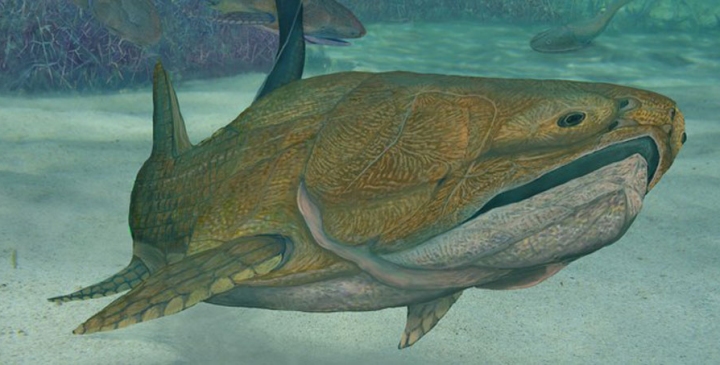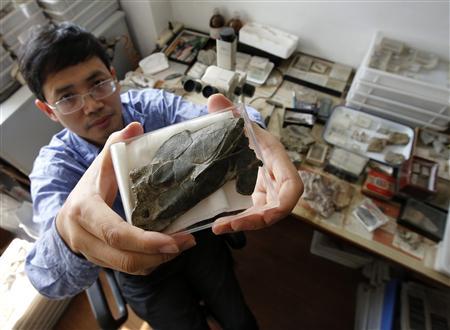Entelognathus: The Fish with the First Modern Face


Hundreds of millions of years ago, armoured fish dominated the oceans, lakes and rivers of the world. These now-extinct creatures belonged to a class called Placoderms, meaning ‘plate-skinned’ in Greek. They had armoured plates covering their head and thorax, and they were the first creatures to develop teeth, pelvic fins, and most importantly, jaws. Jaws enabled them to become predators, which is thought to be a significant step towards the development of complex creatures like humans.
But for years, there’s been debate over whether placoderms are the ancestors of modern jawed vertebrates, because placoderms have a simple jaw made of one single bone while modern vertebrates have jaws made out of a more complex set of bones. There seemed to be something missing in the transition—evolutionary scientists have long puzzled over what happened in between the placoderms dying out and modern jawed vertebrates springing up. Now, though, a new discovery has shown that placoderms are, in fact, the ancestors we’ve been looking for.
In the suburbs of Yunnan in south-west China, a team of scientists recently found an exquisitely preserved fossil of a 419-million-year-old armoured fish. They dubbed it Entelognathus, meaning ‘complete jaw’. Entelognathus primordialis was part of the placoderm family. Around 20 centimetres long, it had bony plates around its head and front, just like a placoderm, but its jaw and facial structure were nothing like the placoderms. Entelognathus boasted a jaw composed of a complex arrangement of smaller bones. It had the same distinctive three-bone system that is still found in chewing vertebrates today: the lower jaw bone (the dentary bone), the two upper jaw bones (for holding the front teeth), and the maxilla (for holding the canines and the teeth further back in the cheek).

Entelognathus provides evidence that placoderms were actually the ancestors of all 30,000 species of living fish fauna today. The discovery adds to the list of “missing links” that we’ve found between major animal groups, such Archaeopteryx, the bridge between dinosaurs and birds, Gogonasus, the bridge between fishes and amphibians, and Cynognathus, the bridge between reptiles and mammals.
As the first vertebrate with a recognisable jaw, Entelognathus essentially had the world’s first ‘face’. This same structure of bones is found today in bony fish, amphibians, reptiles and mammals, including humans.
“Entelognathus primordialis is one of the earliest, and certainly the most primitive, fossil fish that has the same jawbones as modern bony fishes and land vertebrates including ourselves,” says the co-author of the study, Min Zhu of the Chinese Academy of Sciences in Beijing. “The human jaw is quite directly connected to the jaw of this fish, and that’s what makes it so interesting.”

It’s been hailed as most significant paleontological discovery in decades, because it also gives us new insights about how the human body evolved. Jaws and faces were a key development in vertebrate evolution, and the ramifications of this extends beyond fish and into the roots of our own family tree—our lineage seriously began with these ancient fish.
As Dr Matt Friedman of Oxford University has commented: “Basically, as terrestrial vertebrates, we are a kind of very specialised, very bizarre fish that about 370 million years ago went on land and lost its fins. Understanding the origin of bony fishes is inextricably linked to understanding our own origins because we’re bony fishes.”
The results of the study were published in Nature on September 26.
Fuge L (2013-10-16 00:06:10). Entelognathus: The Fish with the First Modern Face. Australian Science. Retrieved: Jul 19, 2025, from https://ozscience.com/biology/entelognathus-the-fish-with-the-first-modern-face/
 Follow
Follow